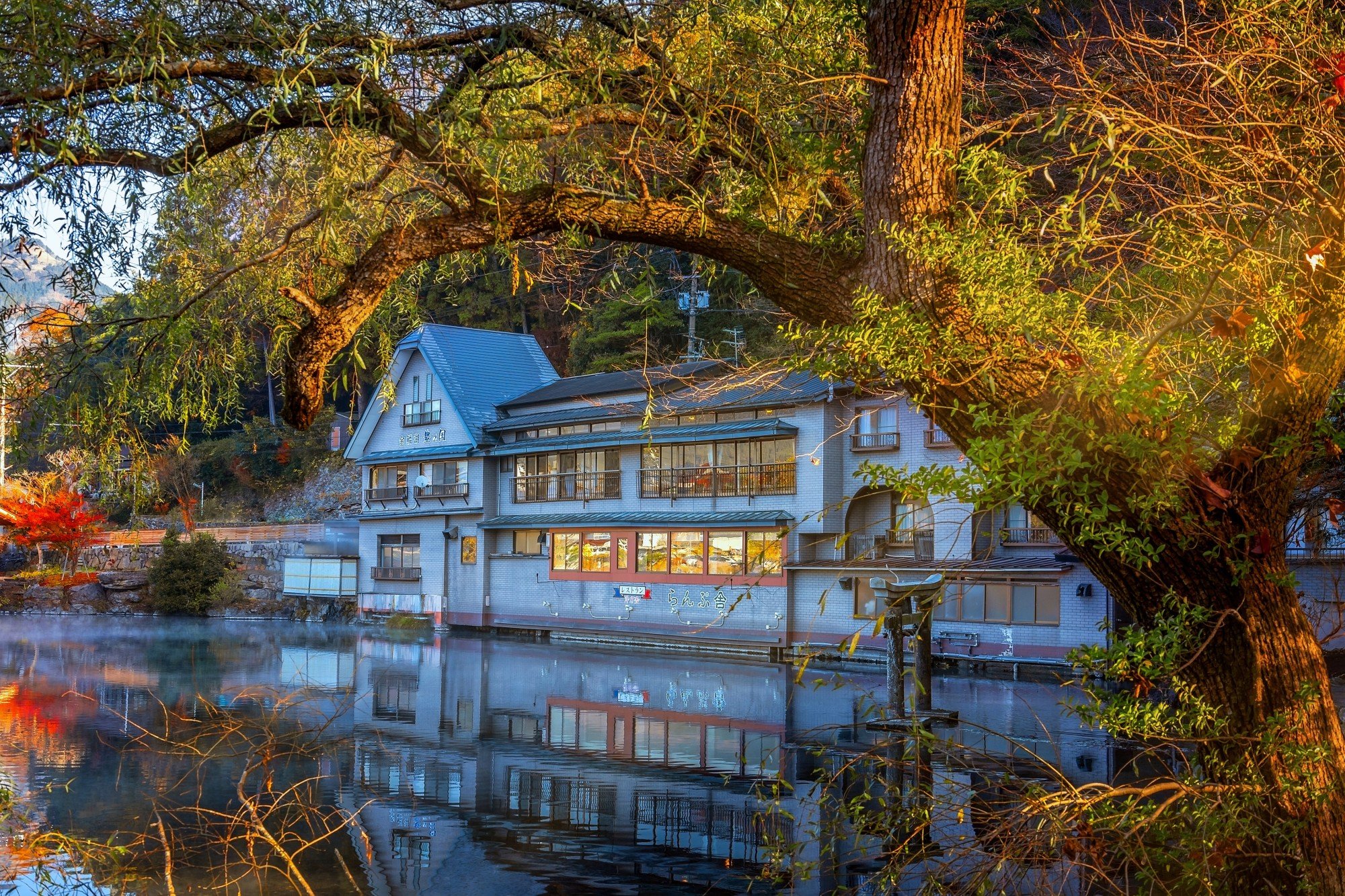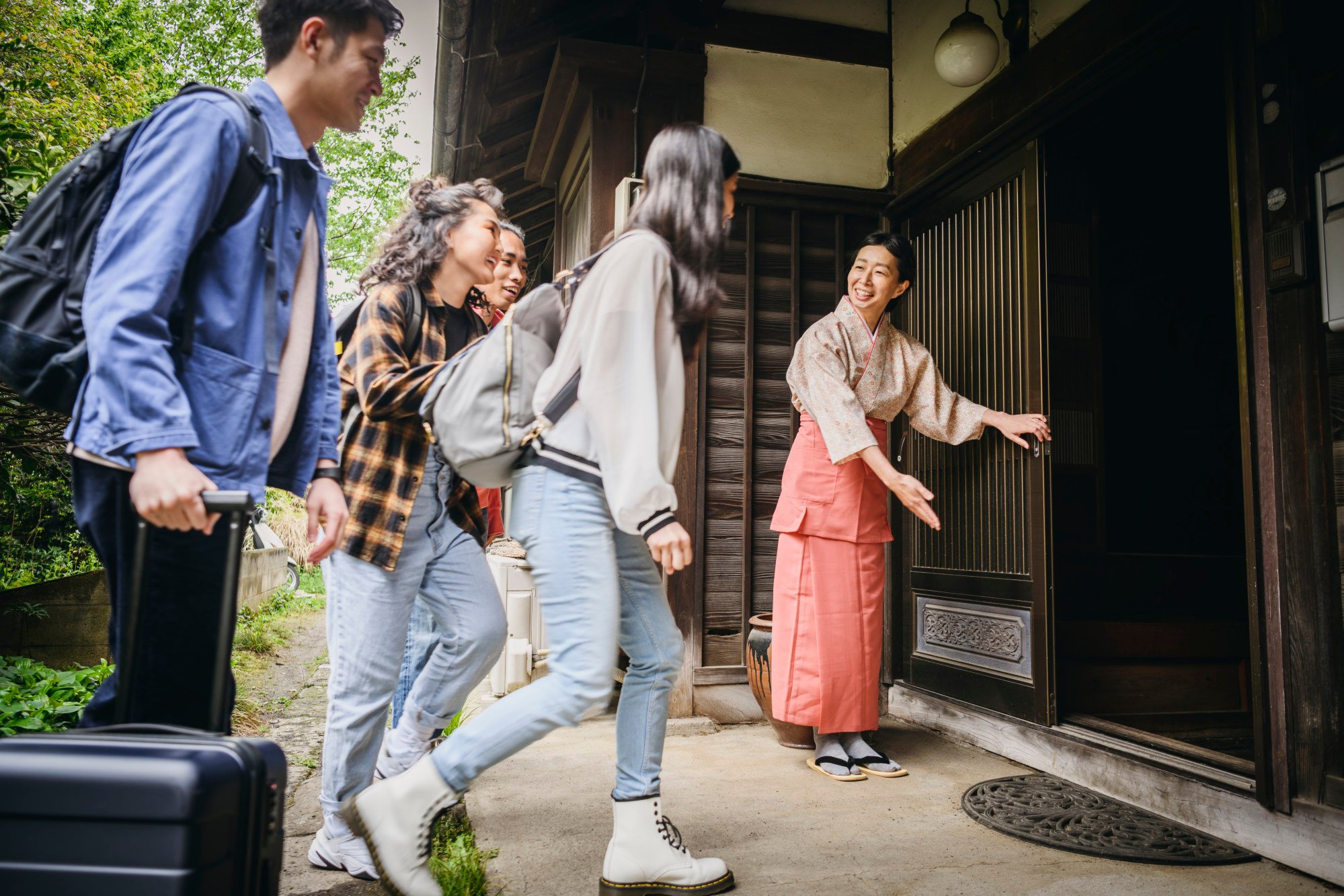The first three locations, scheduled to start opening in 2026, include the well-trodden town of Hakone (two hours southwest of Tokyo by train), the hot springs valley area of Yufu, in southwestern Japan, and Yakushima – a remote and mountainous island near Okinawa.
The starting nightly rates are likely to range from US$800 to around US$1,300.
“We were very curious about how to create more opportunities for customers to engage with Japan,” David Udell, group president of Asia-Pacific for Hyatt, said ahead of the announcement of Atona’s first locations. Working with Kiraku helps the United States-based company fill the gaps in its knowledge base, especially with regard to development in rural areas and creating an authentic experience.
Japanese-American Kiraku founder Kou Sundberg travelled across Japan to nail down Atona’s first three locations, finding building sites and getting local buy-in on the new projects.
Now he is tasked with a tricky balancing act: figuring out how to create hotels that feel both modern and traditional, rooted in the unique facets of Japanese culture without intimidating the global consumer.
So far, he has decided that guests will be able to choose between the typical futon floor mattresses or Western beds. And while high-end ryokans typically feature set, multi-course kaiseki meals served with a sake pairing, Atona properties will have dine-in restaurants with à la carte menus.
The idea is that guests can order a hamburger and cocktail if the craving hits.

Having amenities that cater to Western guests is a strategy that has worked for other ryokan operators, says Catherine Heald, co-founder and CEO of the Asia-focused travel specialist Remote Lands.
“Most non-Japanese luxury travellers love a good kaiseki dinner, but only every three to four days – they definitely don’t want it every night,” she says.
Many facets at Atona will adhere to tradition. Instead of a concierge, there will be a point person similar to an okami-san – the word means “landlady” but refers to the traditional female proprietor of a ryokan who oversees all guests’ needs.
Although every room will have a private hot spring bath, there are plans to have larger communal hot springs at each property for guests who want the authentic experience.

The initial details of Atona’s offerings suggest it is catering to curious, energetic travellers who are looking for experiences tied to well-being. (For one, the Yakushima location will be close to a protected national park filled with some of the oldest cedar trees in the world, and open for hiking.)
It will especially suit the growing number of people who are returning to Japan, having already visited such cities as Kyoto, Osaka and Tokyo. These seasoned travellers will be more likely to venture out towards more rural areas.
“This larger ryokan set-up would be of much appeal to a segment of our clients,” says Tom Marchant, co-founder of the luxury travel outfit Black Tomato, which has a particular expertise in Japan.
“There’s a strong desire for remote ryokan experiences in Japan, and if the product and experience pack a punch with a larger but very personal feel, it’s on the money,” he says, citing the success of brands such as Aman and Four Seasons across the country.

With Atona’s proposition also come risks. Given their remote locations, small footprints and labour-intensive model, ryokans are notoriously hard businesses to scale and run. While Japan is experiencing a tourism boom now with the weak yen offering a bargain, there’s no guarantee that will last until 2026, when the first location is scheduled to open.
Hyatt has recently added hundreds of luxury properties through mergers with brands such as Alila, Miraval and Mr. and Mrs. Smith.
While the first three Atona locations will all be newly built, five additional locales may include renovation projects.
If the brand catches on, there is the potential to take it outside Japan, to other areas with natural hot springs, in a style similar to the Japanese luxury brand Hoshinoya, which has locations in Bali and Taiwan. Sundberg says the latter, along with Northern California and Costa Rica, is in the potential expansion plans.
“We really have to go see the destination and … I think something has to kind of click in the head to proceed further,” he says.







